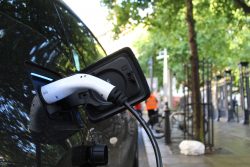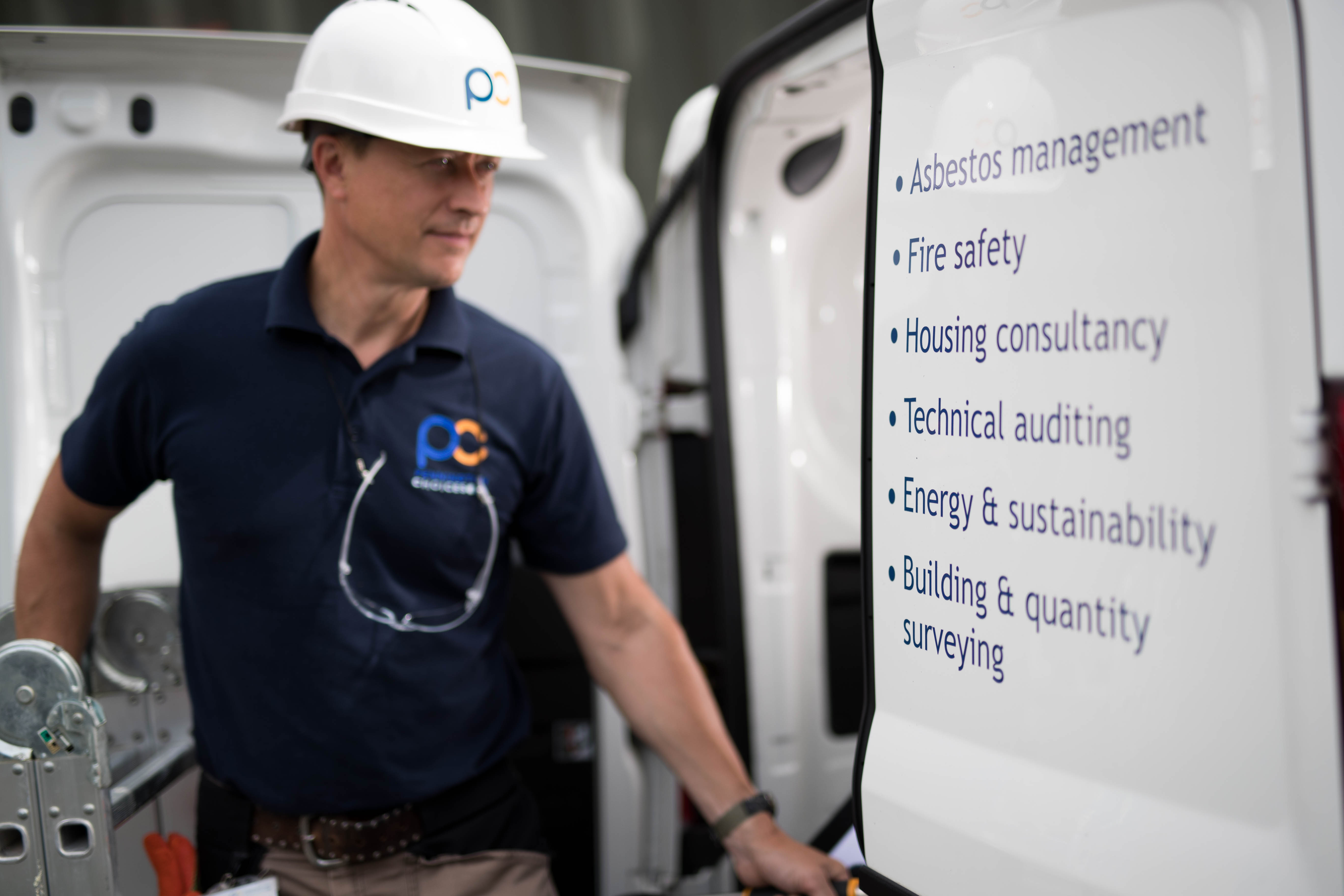Sign up to our newsletter
When it comes to managing estates and facilities within the NHS, multi-storey car parks are often overlooked. Why? Because they simply do not require as much maintenance as a maternity ward which sees many different patients pass through it each day, and they do not pose a direct threat of diseases such as legionella spreading throughout them.
Yet, since 2004, there have been 15 multi-storey car park (MSCP) fires throughout the world, with a total of 38 fatalities reported as a result.
One of the most recent MSCP fires was at King’s Dock in Liverpool back in December 2017. This fire tore through the car park at temperatures of over 1000C, leading to a report from the British Parking Association (BPA).
The resulting report recommended that any changes which are made to future building codes (whether as guidance or prescriptive requirements) should consider multi-storey car parks.
Interested in finding a reliable fire safety consultant? Check out our free guide today.
So, is it time that the NHS reviewed its own MSCP fire safety management?
When it comes to fire safety in MSCPs in the NHS, the Health Technical Memorandum 05-02 (HTM 05-02) is the go-to document, along with Approved Document B. These documents contain key information in ensuring that safety measures are met accordingly, however despite HTM 05-02 being last updated in 2015, and Approved Document B in 2019, neither included anything of note regarding MSCP fire safety.
The result means that neither of the two documents reflect the change in build of modern cars, and their resulting increasing calorific value (the amount of heat produced) in the event of a fire.
Alternative fuel vehicles (AFVs)
Alternative fuel vehicles (AFVs) are on the rise, following a commitment by the UK government to ban the sale of all petrol and diesel vehicles by 2040. According to figures produced by the Society of Motor Manufacturers and Traders (SMMT), electric-car sales leapt by 151.8% year-on-year and 125% more electric cars were sold in 2019 compared to the same point in 2018, so we are likely to see many more Electric Vehicles in the NHS’s MSCPs as a result.
Whilst this pledge is widely welcomed when it comes to reducing our carbon footprint, it cannot be forgotten that modern vehicles pose different threats and challenges to safety within car parks, which have to be considered when assessing the risk posed on NHS property.

Risks of fire
Electric vehicles (EVs) are cars, bikes or vans that use electric motors for propulsion, rather than the traditional internal combustion engine. Cleaner carbon emissions and reduced sound pollution are just some of the benefits these vehicles bring, however, they also carry with them new risks due to their use of batteries, different fluids and need for charging ports.
Growing pains are usually experienced with most new technologies, and EVs are no exception to this. Tesla for instance, the popular brand behind the production of many EVs, has been known to suffer from battery and vehicular fires in some of their flagship vehicles.
Structure
As hospital car parks continue to age, there are more reasons for the NHS to reassess its fire safety.
For instance, older MSCPs may not designed to be designed to support the size of modern-day vehicles, which continue to increase year-on-year. In fact, Merseyside Fire and Rescue Service reported after the King’s Dock fire that the size of modern vehicles was a major factor in the increase of lateral fire spread throughout the structure.
It is also worth noting that the older the MSCP is, the more likely it is that the structure of has diminished over time. Meaning that some of the fundamental fire-resistance measures could have been lost as result of its age – classing the MSCP as a fire risk.
An additional factor for consideration is how Approved Document B only requires open-ended MSCPs to allow for a 15 minutes when it comes to structural integrity in the event of a fire, if they are made of unprotected steel. However, the reality is, is that it takes on average around ten minutes for firefighters to respond to a fire, which in some cases leaves just five minutes before the building is classed as too unsafe for firefighters to take on.
With all of these things in mind, it is not too bold to predict that a fire of a grand scale, similar to the Liverpool Echo MSCP fire, could happen within an NHS car park.
If this was to happen, a potentially catastrophic outcome could be faced, such as structural damage to a hospital resulting in closures and financial loss, or even worse, fatalities. So surely, it is time to review Approved Document B and HTM 05-02 to help protect the NHS, its patients and staff and its assets before it is too late?
What else needs to be done?
The NHS’s MSCPs need to undergo a transformation to accommodate the changing vehicles of the 21st century, and with the recent worries regarding the aluminium composite material (ACM) cladding used at Grenfell Tower and the block of student flats in Bolton, fire compliance is at the forefront of everyone’s minds.
What can Estates and Facilities managers do?
For those in charge of Trusts or hospitals, it is important to consider these key points going forward:
- Do you have a Fire Safety Management plan? If so, what is it? How do visitors raise an alarm? Is the plan due a review?
- What, if any, fire detection and fire alarm systems are in place? CCTV could help detect a fire sooner in the case that nobody is around to see it.
- Consider the presence of fire/smoke detectors, sprinklers or other extinguishing systems.
- A fire risk assessment is essential to ensuring your building is compliant, is yours valid, extensive enough and up to date?
- Are the fire doors and means of escape in good working order?
- Has the structure been compromised by previous remedial works to leave gaps, either vertically or horizontally, in walls or floors through which smoke or flames might pass? Are all gaps fire-stopped? Could the age of the build have an effect on its structural integrity?
- Are there plastic service runs between floors, which if melted could allow smoke and flames through the floors?
- Is the structure maintained in accordance with the recommendations from the British Parking Association (BPA) and the Institution of Civil Engineers (ICE) publication? Recommendations for the Inspection, Maintenance and Management of Car Park Structures?
- Are there adjacent buildings or is the car park integral within a bigger building, where the spread of fire from the car park could result in major risk to life-safety or structural integrity of nearby buildings?
- If it is a basement car park, is there suitable ventilation to relieve potential?
The British Parking Association
Whilst the British Parking Association (BPA) do not work directly with the NHS, a spokesperson for the BPA told us that they do regularly respond to government consultations on the issue of fire safety in car parks, which may be helpful for those managing parking at Hospitals.
However, the organisation recommends that you:
- Ensure that your staff are vigilant; keep pathways and exits clear; ensure signage is visible and clean.
- Ensure that your car park is a member of the Safer Parking Scheme. This is a national standard for UK car parks that have low crime and measures in place to ensure the safety of people and vehicles. A Park Mark is awarded to each car park that achieves the challenging standards. The distinctive Park Mark signage helps drivers find car parks where they can confidently leave their vehicle, knowing the environment is safer. www.parkmark.co.uk
- Familiarise yourself with the BPAs detailed fire safety report, which is due in November 2019, examining some of the issues that were a result of the Liverpool Echo MSCP
You can find more information on the BPA and their work over at www.britishparking.co.uk/
Stay compliant
Pennington Choices have some of the most experienced and knowledgeable Fire Risk Assessors in the country. Our team provides Fire Risk Assessments for businesses, large and small and sectors including the NHS and Social Housing.







